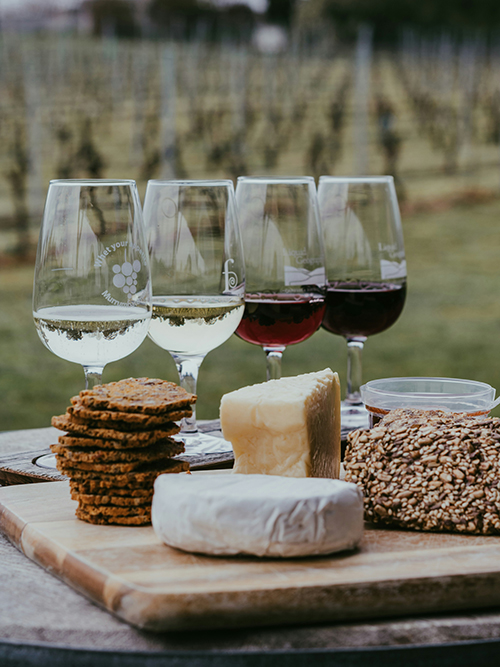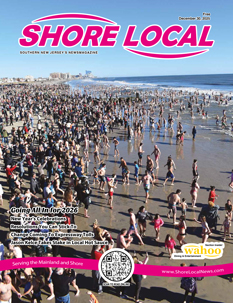By David Setley
Oktoberfest is held in Munich, Germany each year from mid-September through the first Sunday in October. Although known as a beer-drinking celebration, at its roots, Oktoberfest is a “volksfest,” or a festival of the people. It dates to 1810 when King Maximillian invited the people of Bavaria to celebrate the royal wedding of his son, Prince Ludwig to Therese von Sachsen-Hildburghausen. Throughout the 1800s, the festival continued as the people of Munich and Bavaria celebrated the agricultural harvest. It wasn’t until 1896 that beer became a major part of the celebration as large breweries started to sponsor tents at the annual fair. In 2024, over six million visitors are expected to attend the 16-day festival in Munich. Though I do enjoy an occasional beer, my preference is wine. This week, let’s look at some wines that are perfect to enjoy as part of this early autumn “volksfest.”
To honor the center of the Oktoberfest celebration, I’ll begin with some great German and Austrian wines. Riesling, the most planted grape in Germany, is often assumed to be a sweet white wine, but “warte mal” (German for “wait a minute”). Most Rieslings in Germany are made as a dry wine with very high acidity. In the 1960s, when sweeter wines were preferred by many, some international producers added sugar to their Riesling wines to balance the acidity and make them more palatable for wine consumers around the globe.
 If you like a sweeter Riesling, try the Leitz-Dragonstone Riesling 2023 from the Rheingau region of Germany. For a dry Riesling, pick up a bottle of the Ratzenberger-Schloss Fürstenberg Riesling Trocken 2020 from the Mittelrhein region. (In German wine, “trocken” means dry.) This sustainably produced wine is a classic German Riesling with the acidity and minerality that has made this varietal famous. Rieslings pair well with seafood, chicken, pork, salads, young cheeses, and vegetable dishes.
If you like a sweeter Riesling, try the Leitz-Dragonstone Riesling 2023 from the Rheingau region of Germany. For a dry Riesling, pick up a bottle of the Ratzenberger-Schloss Fürstenberg Riesling Trocken 2020 from the Mittelrhein region. (In German wine, “trocken” means dry.) This sustainably produced wine is a classic German Riesling with the acidity and minerality that has made this varietal famous. Rieslings pair well with seafood, chicken, pork, salads, young cheeses, and vegetable dishes.
Another great white wine to celebrate Oktoberfest is Grüner Veltliner from Austria. I suggest the Mantlerhof-Grüner Veltliner from Niederosterreich. The aromas are lightly floral with flavors of pear and a touch of aromatic herbs and white pepper. It is a light and refreshing wine that pairs perfectly with sausages, pork, fish, and young cheeses.
Austria also has a wonderful medium-bodied red wine varietal called Zweigelt. The Oppenauer-Zweigelt 2021 is a very reasonably priced organic, sustainably-produced, and vegan-friendly wine from Weinviertel, Austria. The flavor of this dry wine is wild blueberries and mulberries with a savory aroma that evokes a hint of spices and campfire smoke. This wine pairs well with sausage, pork, beef, and grilled vegetables.
The Alsace region of France is nearly as German as it is French. It is the furthest north of the French appellations and shares the Alps with Germany and Switzerland. Gewurztraminer is a white varietal this region is known for. Some call this wine spicy, but don’t be fooled. In German, the root “gewurz” translates to “spice”, but the original meaning of the word was “aromatic”, a much more apt description of this wine.
The Domaine Barmes-Buecher-Gewurztraminer 2022 is a great example. The intense aroma is of tropical fruit, wildflowers, and aromatic herbs. It is a refreshing, medium-bodied white wine with relatively high acidity. It pairs very well with spicy Indian or Chinese foods as well as with classic German fare, such as sausages.
Alsace is also a great location for growing Riesling grapes. My favorite is the Pierre Sparr-Alsace Riesling 2022. This is a very refreshing dry wine with high acidity and outstanding stone minerality. The aroma and flavor – lemon zest and golden apple – are perfect for this time of year. Enjoy this wine with sushi, fish, or vegetable dishes.
I will add one more red wine from France to our Oktoberfest list. Gamay may not be a familiar grape, but you likely know of the Beaujolais region. This region is south of Burgundy and is best known as the source of Beaujolais Nouveau, the quickly produced, minimally aged celebration wine that comes out in November. Gamay is the grape that this wine is made from, but most do not consider Beaujolais Nouveau to be anything to write home about. Instead, I encourage you to try a fully produced and aged Gamay wine from Beaujolais. Try the Jean-Paul Dubost-Moulin-À-Vent “En Brenay” 2021 or the Jean-Paul Brun-Terre Dorées Morgon 2021. I love these wines, especially in the fall. Both are sustainably farmed and produced with minimal intervention. Fermentation occurs with native yeast, and no sulfites are added. This wine is light to medium-bodied, dry, and has a cherry aroma and flavor with intense earthiness. It is great with roasted poultry and vegetables.
Perhaps you prefer a wine without alcohol for your Oktoberfest (or any) celebration. I recommend the Leitz Eins Zwei Zero Sparkling Riesling or the Leitz Zero Point Five Pinot Noir. These wines are made by the same winemaker who makes the German Rieslings I recommended but with the alcohol removed. They are only 20 calories per 4-ounce service and have 5 grams of carbohydrates. My wife and I drink the sparkling option occasionally when we want the wine flavor without the alcohol. Give it a try!
I hope you are rethinking your beverage options for Oktoberfest and are willing to add some wines to the mix. As always, if you have questions or comments, contact me at dsetley@passionvines.com or stop by Somers Point. Until next time, “Prost!” And Happy Wining!
David Setley is enjoying his retirement from higher education as a wine educator and certified sommelier at Passion Vines in Somers Point, New Jersey.










